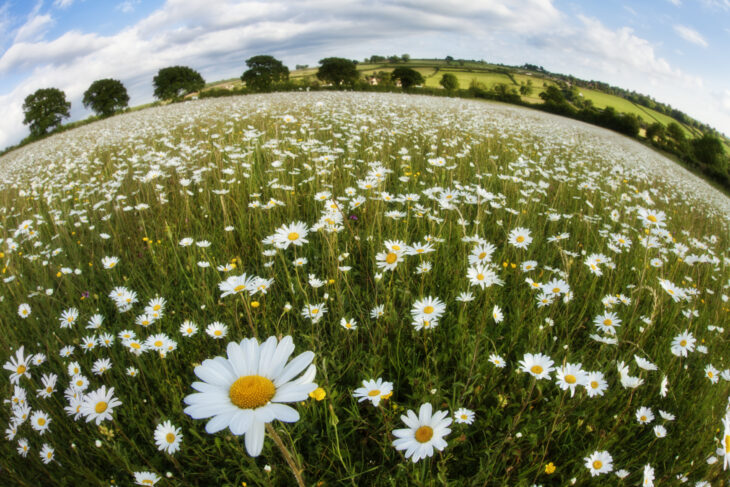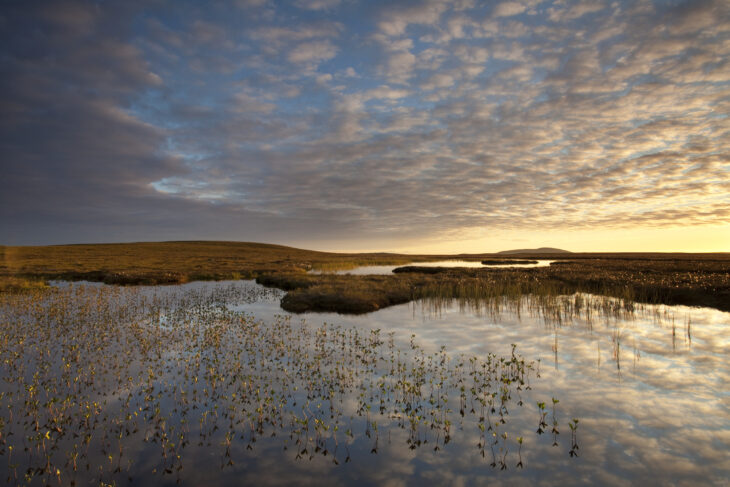Natural capital thinking in the climate emergency
It may have passed many people by, but we now have more information than we’ve ever had on the state of Scotland’s natural capital – our natural assets of geology, soil, air, water and all living things – that makes up our life support system. And indeed this information is more important now than ever before, particularly in light of the climate emergency declared by the First Minister earlier in the year and the Scottish Government’s subsequent commitment that: “All Cabinet Secretaries are looking across the full range of policy areas to identify areas where we can go further, faster.”
Now is the perfect time to reflect on how viewing things through the lens of natural capital can assist in the climate emergency and help Scotland achieve its new emissions target of net zero by 2045. This is made even more poignant given the recent recognition by the First Minister that “the challenges facing biodiversity are as important as the challenge of climate change, and I want Scotland to be leading the way”.
In late March, Scotland’s experimental Ecosystem Service Accounts were published for the very first time, and the following month Scottish Natural Heritage published the latest Natural Capital Asset Index. Overall, it is welcome that we have more information on our natural capital even if it remains work in progress. Taken together though, the data suggests we have a long way to go before we have repaired the long-term damage to our natural capital that we’ve caused in Scotland.

Two of the most concerning issues highlighted in the reports are that:
- while some aspects of natural capital have improved, overall there has been no sustained improvement in the value of natural capital in Scotland in recent years.
- recent trends pale into insignificance when viewed alongside the long-term decline in natural capital of nearly 20% between 1950 and 2000.
Having more detailed information about natural capital in Scotland should lead to a wider and better-informed discussion about the state of our natural environment. In a climate emergency, such data should be instrumental in helping the government to deliver on its commitment to protect and enhance our natural capital. This could include, for example, restoration of peatlands, expansion of native woodlands and better stewardship of our marine environment. This will also help us meet our international obligations including the Sustainable Development Goals (SDGs). In short, better information should lead to better decision making.
It is commendable that even before the climate emergency the Scottish Government’s vision was to “take a bold approach to enhancing and protecting our natural assets”. Also, that within last year’s Economic Action Plan it was recognised that high quality natural assets “are the cornerstones of our economy, culture and quality of life”.
But our government needs to go further and faster. It needs to set out in this week’s Programme for Government what actions will be taken to ensure that some of the positive trends manifest themselves in a more sustained improvement in our natural assets. This is fundamental to us achieving net-zero emissions by 2045. We must invest in our natural assets to increase their ability to provide natural climate solutions – nature’s ability to help solve our climate crisis. This includes absorbing carbon in woodlands, the marine environment and peatlands. Also, restoring wetlands to reduce flood events and greening the urban environment to reduce extreme temperatures and pollution in our cities.

A lack of action will mean we are at risk of not getting beyond the positive rhetoric from the Scottish Government. The former US President Theodore Roosevelt summarised the concern well when he said:
“Rhetoric is a poor substitute for action, and we have trusted only to rhetoric. If we are really to be a great nation, we must not merely talk; we must act big.”
By putting natural capital (and the natural climate solutions that flow from it) at the centre of the approach to the climate emergency, government can show the leadership that is urgently needed. Acting big in Scotland would mean putting natural capital thinking at the heart of the new environment strategy and key policies for agriculture, forestry, urban planning and the marine environment.
The Scottish Government must be open and transparent, demonstrating in tomorrow’s Programme for Government that investment in our natural assets will play its part (in addition to reducing emissions) in addressing the climate emergency and achieving net zero emissions. Two actions that the Trust feels would underline that the Scottish Government is serious about addressing climate change and understands the pivotal role that natural climate solutions can play are:
- The current economic strategy needs to be refreshed so that its commitment to protect and enhance our natural capital properly reflects the climate and ecological emergency and is more fully developed with clear actions and timescales. It must embrace the First Minister’s recent statement that targeting growth in GDP has its limitations and we need to focus on the wider wellbeing of the population. This means changing economic policy (and associated budgets) so that we live within planetary boundaries and use the Earth’s resources sustainably.
- Investment in green and blue infrastructure needs to be subject to the same rigour and strategic approach as that for grey infrastructure. The Scottish Infrastructure Commission already has low carbon objectives and should be tasked with setting up an expert group, to advise government on a Green and Blue Infrastructure Investment Plan for 2023 and beyond (alongside the Infrastructure Investment Plan). The two investment plans should work in harmony to maximise environmental, economic and social returns.
The Programme for Government is expected tomorrow, and the Trust will be listening with keen interest to see if it has really matched the rhetoric and put addressing the climate and ecological emergency front and centre.
Dougie Peedle, Head of Policy
Help protect Scotland’s wildlife
Our work to save Scotland’s wildlife is made possible thanks to the generosity of our members and supporters.
Join today from just £3 a month to help protect the species you love.
Preface
It may have passed many people by, but we now have more information than we’ve ever had on the state of Scotland’s natural capital – our natural assets of geology, …
